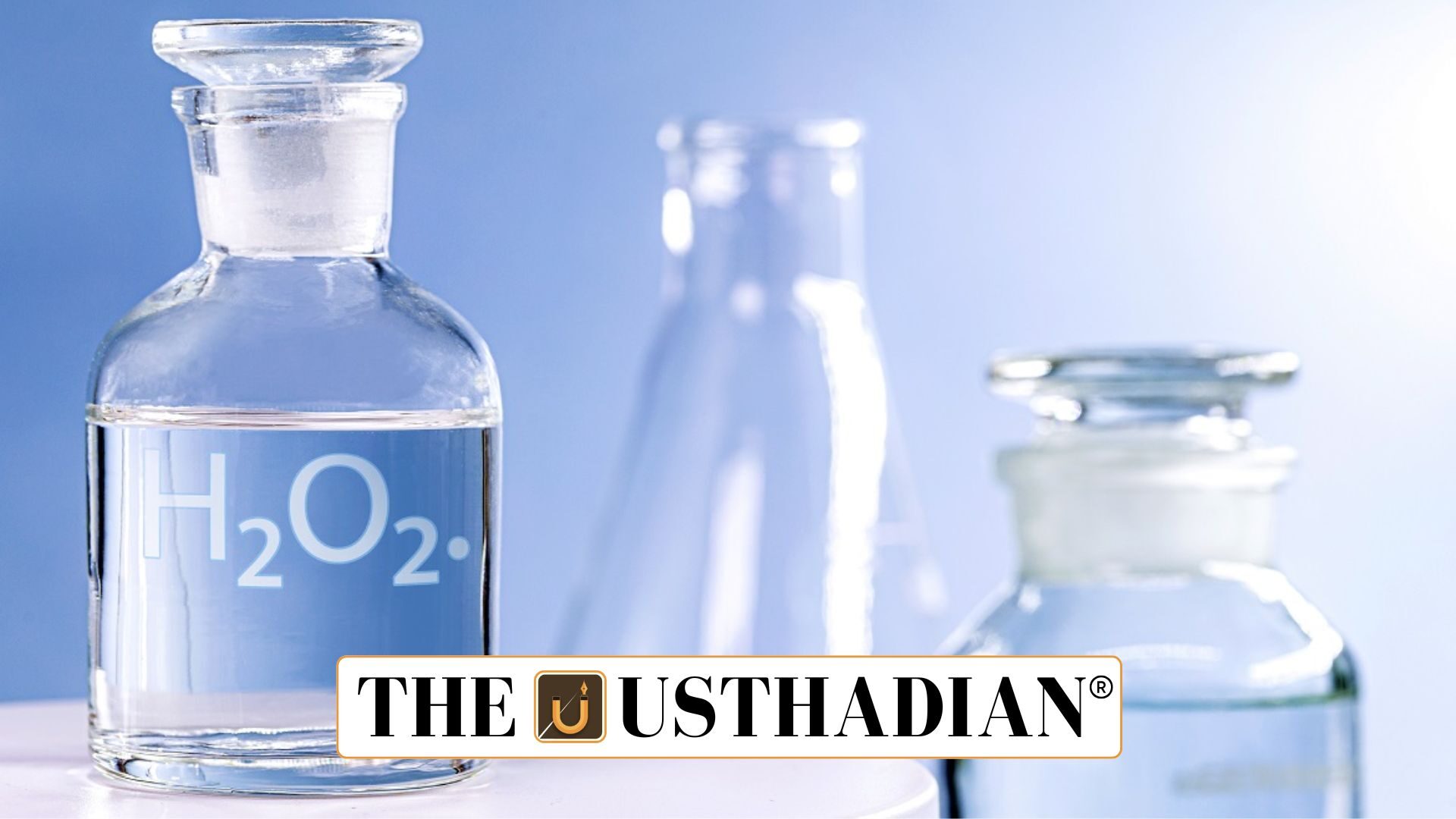Why hydrogen peroxide needs a green upgrade
Sunlight-Driven Hydrogen Peroxide Production Using Mo-DHTA COF: Hydrogen peroxide (H₂O₂) is widely used in healthcare, water treatment, chemical synthesis, and fuel cells. Its appeal lies in its clean decomposition into water and oxygen. However, traditional production methods—especially the anthraquinone process—are energy-intensive, costly, and polluting. As global demand grows, a sustainable production method becomes essential.
Limitations of earlier photocatalysts
Photocatalytic production of H₂O₂ using sunlight has been explored, but common materials like metal oxides, graphitic carbon nitride, and MOFs suffer from poor light absorption, low electron mobility, and limited stability. These issues make them inefficient and unsuitable for real-world applications.
Role of covalent organic frameworks
COFs (Covalent Organic Frameworks) are porous, crystalline, and highly tunable. Their narrower band gaps allow better visible light absorption. COFs also offer excellent photostability, making them promising for photocatalysis. However, their lack of active sites and inefficient charge transfer limits performance.
Static GK fact: COFs were first reported in 2005 and are built entirely from light elements like carbon, hydrogen, nitrogen, and oxygen.
Breakthrough with metal-embedded COFs
Embedding metal centres creates Metal-COFs (M-COFs) that enhance catalytic activity and electron mobility. The newly developed Mo-DHTA COF is one such material. It integrates dimolybdenum paddlewheel units with α-hydroquinone linkers, forming a stable scaffold that captures light and activates oxygen.
How Mo-DHTA COF works under sunlight
When exposed to visible light, Mo-DHTA COF produces excitons—electron-hole pairs. These electrons reduce oxygen molecules to superoxide radicals, which further combine with protons and electrons to produce H₂O₂. The process works in multiple solvents like water, ethanol, and benzyl alcohol, increasing its versatility.
Static GK Tip: Sunlight is made up of ~43% visible light, making visible-light-active catalysts highly practical for solar-driven processes.
Superior performance and recyclability
The photocatalytic efficiency of Mo-DHTA COF is among the best reported. It remains stable over multiple cycles, showing no significant loss in performance. This makes it an excellent choice for long-term industrial applications, unlike many traditional photocatalysts which degrade quickly.
Potential applications in green industry
Mo-DHTA COF-based H₂O₂ production could revolutionise the chemical, pharmaceutical, and environmental sectors. It aligns with global goals of reducing fossil fuel dependence and avoiding hazardous reagents. It may also be useful for CO₂ reduction, water splitting, and other solar-driven chemical reactions.
What lies ahead
Researchers aim to enhance the efficiency further by experimenting with different metals and structural optimisations. Scaling up the technology is crucial to making this green method viable for mass production and commercial applications.
Static Usthadian Current Affairs Table
Sunlight-Driven Hydrogen Peroxide Production Using Mo-DHTA COF:
| Fact | Detail |
| Chemical | Hydrogen Peroxide (H₂O₂) |
| Catalyst Name | Mo-DHTA COF |
| Key Components | Dimolybdenum paddlewheel and α-hydroquinone |
| Photocatalytic Mechanism | Sunlight-induced oxygen reduction |
| Solvents Used | Water, ethanol, benzyl alcohol |
| Application Sectors | Healthcare, environment, chemical industry |
| Traditional Method | Anthraquinone process |
| Key Advantage | High efficiency and recyclability |
| COFs Introduced | 2005 |
| Light Used | Visible spectrum of sunlight |








